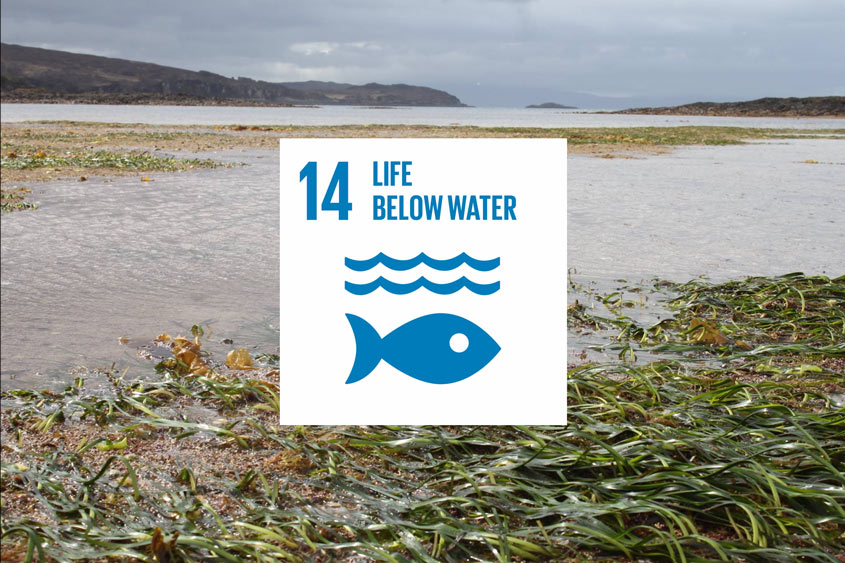Project Seagrass: A Year In Review 2018-2019

Richard Lilley Every year, as a charitable organisation, we have to write a report highlighting the previous 12 months activities. In our early days as a charity these seemed fairly straightforward, but as I sit here to write this, I find it very difficult to decided what to include. A good sign for seagrass! Anyway, this is my take on our work for the 12 months from April 2018 to March 2019. April 2018 April 2018 seems like a long time ago now, but our financials year kicked off with Laura attending “A new post-2020 biodiversity agenda – the communications challenge” at the University of Cambridge. Part of this was the Cambridge Conservation Initiative’s Panel Discussion on Setting a new post-2020 biodiversity agenda. The 2-hour lecture/interactive question and answer session focused on what scientists and the world needs to do ahead of the 2020 Beijing Biodiversity Conference (which many hope will have the same impact on biodiversity as the Paris agreement has had on climate change). May 2018 In May Richard and Leanne, in collaboration with Dr Lina Mtwana Nordlund of Stockholm University, published the first quantitative global evidence on the significant roles that seagrasses play in world fisheries. This was an timely study that made explicit the link between global fisheries production and seagrass meadows, with the paper getting some good coverage on the BBC and leading to a subsequent letter that was sent to the European Union and British Government. May was also when the Amgueddfa Genedlaethol Caerdydd (National Museum Cardiff) hosted Project Seagrass as we celebrated the ‘Year Of The Sea’ in Wales! Many seahorses, cod, cuttlefish and crabs were coloured in with Evie and Leanne manning the stands for the event. Evie and Leanne at the National Museum, Cardiff celebrating Wales “Year of the Sea” June 2018 The International Seagrass Biology Workshop series is the biennial lead event of the World Seagrass Association. In June 2018, the 13th ISBW was held in at the National University of Singapore, Singapore. “Translating Science into Action” was the overarching theme for ISBW13 (a theme I think we can all get behind), with this year’s theme motivated by the ever-important need for effective communication of seagrass science amongst scientists, managers and practitioners. Ben (who had literally just move to Stockholm to undertake his PhD at Stockholm University) joined Richard and Leanne at the Indo-Pacific Seagrass Network workshop which focussed on assessing the value of seagrass meadows for supporting livelihoods and food security across the Indo-Pacific. Benjamin Jones showing how Baited Remote Underwater Video can be used to record species abundance and diversity. We left the conference feeling that the immediate challenge is to better develop and implement science-based seagrass conservation and restoration policies and protocols that will help put new science into practice. Immediately following ISBW13 was IMCC5. The 5th International Marine Conservation Congress in Kuching, Sarawak 24-29 June, 2018 was a brilliant conference. With over 700 marine conservation professionals and students in attendance. In my opinion, IMCC is the most important international event for anyone involved in marine conservation. This year’s event was the beautiful city of Kuching in Sarawak, and the conference brought together marine conservationists from many walks of life including but not limited to marine conservation scientists, practitioners, teachers, policy makers, and journalists. As I have to pick a highlight for Project Seagrass, it would have to be our workshop at the first International Marine Kids Congress, organized and led by qualified science instructors, IMKC ran along IMCC5 and engaged 30 school-aged children (ages 7 through 14) in science education, marine biology, environmental conservation, and experiential learning! For our part we enjoyed creating a seagrass meadow (see picture) and sharing with these young minds, all of the fantastic animals that live or rely on seagrass meadows! A fantastic group of kids learning about the wonders of seagrass at IMCC5. The next IMCC event (IMCC6) is in Kiel, Germany in August 2020. So, join us all in the heart of Europe as we come together to help “Make Marine Science Matter!” July 2018 After an exceptionally busy June, the month of July was a comparatively quiet for the Project Seagrass team! That said, we recorded another great podcast with Andrew Lewin for the fantastic Speak Up For Blue. In Scotland myself and Lauren Clayton attend the ‘Round The Pier Day’ Harbour Celebrations in Ullapool for some further seagrass awareness raising activities and in England and Wales a big focus for the month was our response to the consultation on the third tranche of MCZ designations. Finally, the 29th of July was our 5th Birthday, a significant milestone for us. August 2018 Our work in August celebrates the contributions to Project Seagrass of Oliver Dalby. Oliver’s project investigated the motivations, benefits, barriers and changes in knowledge associated with taking part in seagrass citizen science projects, specifically SeagrassSpotter and Seagrass-Watch, which he followed up with a popular blog post ‘Seagrass citizen science: investigations into a potential seagrass saviour’ September 2018 Equally, in September a highlight was hearing about the work of intern Isadora Sinha. Isadora’s project concentrated on analysis of the demographics of current SeagrassSpotter users, which has never been investigated before. The demographics of users are of particular importance as we want to ensure that SeagrassSpotter is used by citizens of all ages and professions, not solely by researchers. Her work helped us to think about how best to make SeagrassSpotter accessible and known to the wider public and has led to changes in the app which are currently being implemented. Isadora wrote a blog on her Project Seagrass experience. October 2018 Beyond our annual Autumn Survey in Porthdinllaen (this time we were out at 03:30am in the snow wind and hail!) October was a relatively quiet month. We survey the seagrass meadow at Portdinllaen four times a year (Spring, Summer, Autumn and Winter) using standard Seagrass-Watch methods. November 2018 In November Richard and Leanne wrote with colleagues a challenging piece of The Conversation suggesting that Tropical marine conservation needs to change as coral reefs decline. The article highlights that with a heavy heart we are now at a marine conservation crossroads with all paths looking precarious at best. December 2018 We kicked off December with our annual advent seagrass


